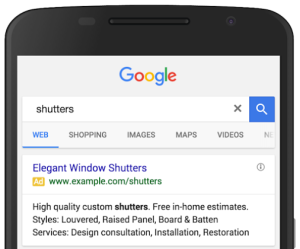Wondering why your site is experiencing a drop in performance? Columnist Winston Burton explores what to check before assuming it’s the result of an algorithm update.
Predicting why organic traffic has declined year over year or month over a month can be quite challenging, but it doesn’t have to be.
I have seen many companies (and some SEOs) correlate a drop in traffic with the date of a known algorithm update and assume that the site was hit by Penguin, Panda or Hummingbird, for instance.
But this is often not the case; there are many other reasons why organic traffic can decrease over time.
Think Mobile
Mobile search is growing rapidly while desktop search remains stagnant; in fact, mobile now accounts for the majority of all searches on Google. If your site is not properly optimized for mobile devices, you are likely going to see a decline in traffic as users turn elsewhere for a better mobile experience.
In fact, Google launched its mobile-friendly algorithm update on April 21, which gave a rankings boost to sites that are properly configured for mobile devices. So, in addition to the lost traffic naturally resulting from a poor mobile user experience, you’re now also looking at a potential drop in search engine visibility relative to your mobile-friendly competitors.
Review Your Historical Data
One of the most important things some brands and SEOs do not pay close attention to is historical data.
Reviewing historical data will speed up your analysis and help determine what keywords and pages were driving performance that could have fallen off the first page for a number of reasons: a technical error, stale content, lack of social endorsements and engagement or being replaced by competitors who are building out a strong content strategy.
Review historical link activity to see if the site lost any links from high-quality and relevant domains. Losing a premium backlink or two can sometimes cause a site to drop off the face of the earth. This could occur when a site is restructuring or migrating, causing the links to break.
Check Your Analytics Configuration
Another common mistake is that analytics was not configured correctly, or tracking code was not added to new page templates. With SEO being so focused on building out high-quality content based on user intent, tracking code must be on every web page that is accessible to the search engines to enable attribution of traffic to organic search.
Consider Changes In The Search Landscape
The search landscape has also changed dramatically over the last few years. Google made several high-impact changes to the search engine result pages (SERPs) that can influence visibility and traffic.
For example, Google recently began showing three paid search ads for certain mobile search queries, which effectively eliminated organic results from “above the fold,” causing a decline in traffic and revenue for some brands. Google Answers, Knowledge Graph, and other updates have also affected the amount of organic real estate in the SERPs, which could result in less traffic.
The organic listings are ranked accordingly, and then the SERPs are ordered based on page layout: paid listings, local packs, featured snippets, carousel, images, news results and so on.
This ordering can cause a drop in organic traffic when organic listings are pushed “below the fold,” since those other assets are now taking up real estate that is more valuable and captures more attention from users.
Assess The Impact Of Other Campaigns
Often, marketers do not take a time to review the other marketing campaigns that were done year-over-year. Paid search, TV, display and other types of marketing have an impact on SEO.
If paid search, TV or other marketing was not done this year, branded query volume may not be as high, causing a decrease in branded traffic versus the previous year. If the display was not run, this could limit the number of impressions from branded keywords, which could also affect traffic from organic search.
TV ads drive engagement, causing consumers to want to search for branded keywords in search engines to learn more about products and services, driving up query volume for branded keywords.
Anything that raises brand awareness has a positive impact on SEO.
Check For Website Changes & Technical Issues
Developers often make updates to a site and do not inform the SEO team. If title tags or page headers are changed without SEO consideration, your web page may experience a drop in rankings. When URL structures are changed and are not redirected appropriately, the site can lose a tremendous amount of traffic.
Additionally, developers can sometimes mistakenly block the entire site or certain directories of the site from being indexed, which will cause a decrease in organic traffic, especially if any high-traffic directories and pages are being blocked.
Audit Your Site Content
Often, the main reason for losing search visibility is a lack of engagement with your site.
Look to your site content with a critical eye. Is the content high-quality? Is it useful, honest and informative? Is it relevant to the keywords you want to rank for? And how does it compare with the content that outranks you? Be honest with yourself, and look for ways to improve.
Remember: If end users are not interested enough to engage substantially with your content, why should Google be interested in it?
Final Thoughts
If you are not doing anything deceptive or trying to outsmart Google and have useful content that meets the needs of end users, you should not have to worry about any algorithm updates.
If you are doing something that is questionable, or if you have low-quality content, then you have all the reason in the world to worry about being penalized by Google, and you can expect a decline in traffic.
Following best practices, checking keywords, reviewing page content and investigating your site from a technical perspective will help you regain traffic and increase key performance indicators over time.



